 W
WThe aftermath of World War I saw drastic political, cultural, economic, and social change across Eurasia, Africa, and even in areas outside those that were directly involved. Four empires collapsed due to the war, old countries were abolished, new ones were formed, boundaries were redrawn, international organizations were established, and many new and old ideologies took a firm hold in people's minds. World War I also had the effect of bringing political transformation to most of the principal parties involved in the conflict, transforming them into electoral democracies by bringing near-universal suffrage for the first time in history, as in Germany, Great Britain, and Turkey.
 W
WIn the context of the history of the 20th century, the interwar period was the period between the end of the First World War on November 11, 1918 and the beginning of the Second World War on September 1, 1939. This period is also colloquially referred to as Between the Wars.
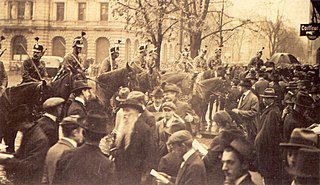 W
WThe 1918 Swiss general strike took place from November 12 to 14 and involved around 250,000 workers.
 W
WThe Allies of World War I or Entente Powers were the coalition of countries led by France, Britain, Russia, Italy and Japan against the Central Powers of Germany, Austria-Hungary, the Ottoman Empire, and Bulgaria during the First World War (1914–1918).
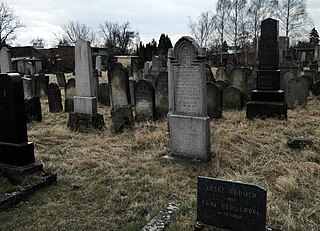 W
WAfter World War I and during the formation of Czechoslovakia, a wave of anti-Jewish rioting and violence was unleashed against Jews and their property, especially stores.
 W
WAnzac Day is a national day of remembrance in Australia and New Zealand that broadly commemorates all Australians and New Zealanders "who served and died in all wars, conflicts, and peacekeeping operations" and "the contribution and suffering of all those who have served". Observed on 25 April each year, Anzac Day was originally devised to honour the members of the Australian and New Zealand Army Corps (ANZAC) who served in the Gallipoli Campaign, their first engagement in the First World War (1914–1918).
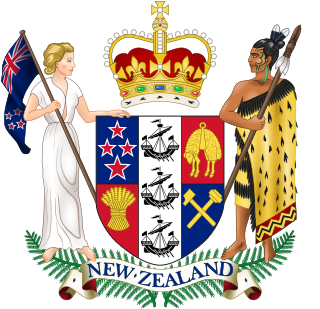 W
WThe Anzac Day Act in New Zealand is a law which makes Anzac Day a national holiday in New Zealand.
 W
WAnzac Day is a day of remembrance in Queensland, Australia. It is a public holiday held on 25 April each year. The date is significant as the Australian and New Zealand troops first landed at Gallipoli in World War I on 25 April 1915.
 W
WArmistice Day is commemorated every year on 11 November to mark the armistice signed between the Allies of World War I and Germany at Compiègne, France at 5:45 am, for the cessation of hostilities on the Western Front of World War I, which took effect at eleven in the morning—the "eleventh hour of the eleventh day of the eleventh month" of 1918. But, according to Thomas R. Gowenlock, an intelligence officer with the U.S. First Division, shelling from both sides continued for the rest of the day, ending only at nightfall. The armistice initially expired after a period of 36 days and had to be extended several times. A formal peace agreement was only reached when the Treaty of Versailles was signed the following year.
 W
WIn diplomatic history, a color book is an officially sanctioned collection of diplomatic correspondence and other documents published by a government for educational or political reasons, or to promote the government position on current or past events. The earliest were the British Blue Books, dating to the 17th century. In World War I, all the major powers had their own color book, such as the German White Book, the Austrian Red Book, Russian Orange Book, and more.
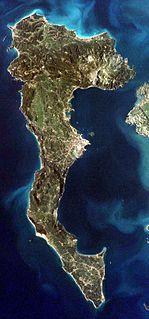 W
WThe Corfu incident was a 1923 diplomatic and military crisis between Greece and Italy. It was triggered when an Italian general heading a commission to resolve a border dispute between Albania and Greece was murdered in Greek territory along with members of his staff. In response, Benito Mussolini issued a severe ultimatum to Greece and, when it was not accepted in whole, dispatched forces to bombard and occupy Corfu. Mussolini defied the League of Nations and stated Italy would leave if it arbitrated in the crisis, and the Conference of Ambassadors instead eventually tendered an agreement favoring Italy. This was an early demonstration of the League's weakness when dealing with larger powers.
 W
WThe Genoa Economic and Financial Conference was a formal conclave of 34 nations held in Genoa, Italy from 10 April to 19 May 1922. It was planned by British prime minister David Lloyd George to resolve the major economic and political issues facing Europe, and to deal with the pariah states of Germany and Russia, both of which had been excluded from the Paris Peace Conference of 1919. The conference was particularly interested in developing a strategy to rebuild a defeated Germany, as well as central and eastern European states, and to negotiate a relationship between European capitalist economies and the new Bolshevik regime in Soviet Russia. However, Russia and Germany signed a separate agreement at Rapallo and the result at Genoa was a fiasco with few positive results. The conference did come up with a proposal for resuming the gold standard that was largely put in place by major countries.
 W
WThe iron harvest is the annual "harvest" of unexploded ordnance, barbed wire, shrapnel, bullets and congruent trench supports collected by Belgian and French farmers after ploughing their fields. The harvest generally applies to the material from the First World War, which is still found in large quantities across the former Western Front.
 W
WThe left-wing uprisings against the Bolsheviks, known in anarchist literature as the Third Russian Revolution, were a series of rebellions, uprisings, and revolts against the Bolsheviks by oppositional left-wing organizations and groups that started soon after the October Revolution, continued through the years of the Russian Civil War, and lasted into the first years of Bolshevik rule of the Soviet Union. They were led or supported by left-wing groups such as some factions of the Socialist Revolutionary Party, Left Socialist-Revolutionaries, Mensheviks, and anarchists. Generally, the uprisings began in 1918 because of the Bolshevik assault on soviet democracy, the signing of the Treaty of Brest-Litovsk, and opposition to Bolshevik socioeconomic policy. The Bolsheviks grew increasingly hard-line during the decisive and brutal years following the October Revolution. These rebellions and insurrections occurred mostly during and after the Russian Civil War, until around 1924, though there did exist various small-scale insurgencies until World War II.
 W
WLegacy is an Australian non-profit organisation established in 1923 by ex-servicemen. The organisation has the aim of caring for the dependents of deceased Australian service men and women. The dependents of World War I, World War II, the Korean War, Malayan emergency, and Vietnam War deceased are cared for. In addition the peacekeeping operations in East Timor, the wars in Iraq and Afghanistan have provided ongoing work for Legacy. Finally, any death which is deemed service-related is attended to by Legacy.
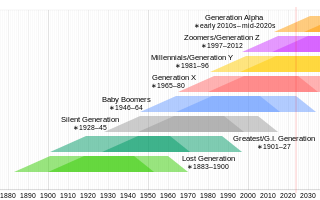 W
WThe Lost Generation was the social generational cohort that came of age during World War I. "Lost" in this context refers to the "disoriented, wandering, directionless" spirit of many of the war's survivors in the early postwar period. The term is also particularly used to refer to a group of American expatriate writers living in Paris during the 1920s. Gertrude Stein is credited with coining the term, and it was subsequently popularized by Ernest Hemingway who used it in the epigraph for his 1926 novel The Sun Also Rises: "You are all a lost generation".
 W
WThe May Fourth Movement was an anti-imperialist, cultural, and political movement which grew out of student protests in Beijing on 4 May 1919.
 W
WThe Memorable Order of Tin Hats (M.O.T.H.) was founded in 1927 by Charles Evenden as a brotherhood of South African former front-line soldiers. The ideal is to help comrades in need, either financially or physically; and to remember all servicemen who have answered the Sunset Call, both in war and peacetime.
 W
WThe Returned and Services League, Australia (RSL) is a support organisation for men and women who have served or are serving in the Defence Force.
 W
WThe Occupation of the Rhineland from 1 December 1918 until 30 June 1930 was a consequence of the collapse of the Imperial German Army in 1918. Despite Germany's proving victorious on the eastern front following the Russian Revolution, the military high command had failed to prevent the continuing erosion of morale, both domestically and in the army. Despite transferring veteran troops from the eastern front to fight on the western front, the Spring Offensive was a failure and following the outbreak of the German Revolution, Germany's provisional government was obliged to agree to the terms of the 1918 armistice. This included accepting that the troops of the victorious powers occupied the left bank of the Rhine and four right bank "bridgeheads" with a 30 kilometres (19 mi) radius around Cologne, Koblenz, Mainz and a 10 kilometres (6 mi) radius around Kehl. Furthermore, the left bank of the Rhine and a 50 kilometres (31 mi)-wide strip east of the Rhine was declared a demilitarized zone. The Treaty of Versailles repeated these provisions, but limited the presence of the foreign troops to fifteen years after the signing of the treaty. The purpose of the occupation was on the one hand to give France security against a renewed German attack, and on the other to serve as a guarantee for reparations obligations. After this was apparently achieved with the Young Plan, the occupation of the Rhineland was prematurely ended on 30 June 1930. The administration of occupied Rhineland was under the jurisdiction of the Inter-Allied Rhineland High Commission with its seat at the Upper Presidium of the Rhine Province in Koblenz.
 W
WThe Romanian occupation of Pokuttya took place in early 1919, when, as a result of alliances concluded between Romania and Poland, the former entered the southeastern corner of the former Austro-Hungarian ruled province of Galicia. During the interwar period, Romania was Poland's main ally in Eastern Europe. Both nations were bound by several treaties and history of this alliance dates back to the end of World War I and the Treaty of Versailles. However, to actively cooperate, governments in Bucharest and Warsaw emphasized the necessity of a shared border. Discussions about the border started in Paris some time at the beginning of 1919 and continued during the following months.
 W
WThe San Remo conference was an international meeting of the post-World War I Allied Supreme Council as an outgrowth of the Paris Peace Conference, held at Villa Devachan in Sanremo, Italy, from 19 to 26 April 1920. The San Remo Resolution passed on 25 April 1920 determined the allocation of Class "A" League of Nations mandates for the administration of three then-undefined Ottoman territories in the Middle East: "Palestine", "Syria" and "Mesopotamia". The boundaries of the three territories were "to be determined [at a later date] by the Principal Allied Powers", leaving the status of outlying areas such as Zor and Transjordan unclear.
 W
WThe Service Entry Badge was a commemorative medal of Der Stahlhelm, Bund der Frontsoldaten established on 13 November 1933 by Franz Seldte. The badge was awarded to recognize Der Stahlhelm service "during the harsh years of struggle" (1918–1933).
 W
WThe Soviet westward offensive of 1918–1919 was part of the campaign by the Russian Soviet Federative Socialist Republic into areas abandoned by the Ober Ost garrisons that were being withdrawn to Germany following that country's defeat in World War I. The initially successful offensive against the Republic of Estonia ignited the Estonian War of Independence which ended with the Soviet recognition of Estonia. The war against Republics of Latvia and Lithuania was more successful for the Soviets, and resulted in the Latvian Socialist Soviet Republic and Lithuanian Soviet Socialist Republics being established. In Belarus, the Belarusian People's Republic was conquered and the Socialist Soviet Republic of Byelorussia proclaimed.
 W
WThe World War I Victory Medal was a United States World War I service medal designed by James Earle Fraser.
 W
WThe total number of military and civilian casualties in World War I was about 40 million: estimates range from around 15 to 22 million deaths and about 23 million wounded military personnel, ranking it among the deadliest conflicts in human history.